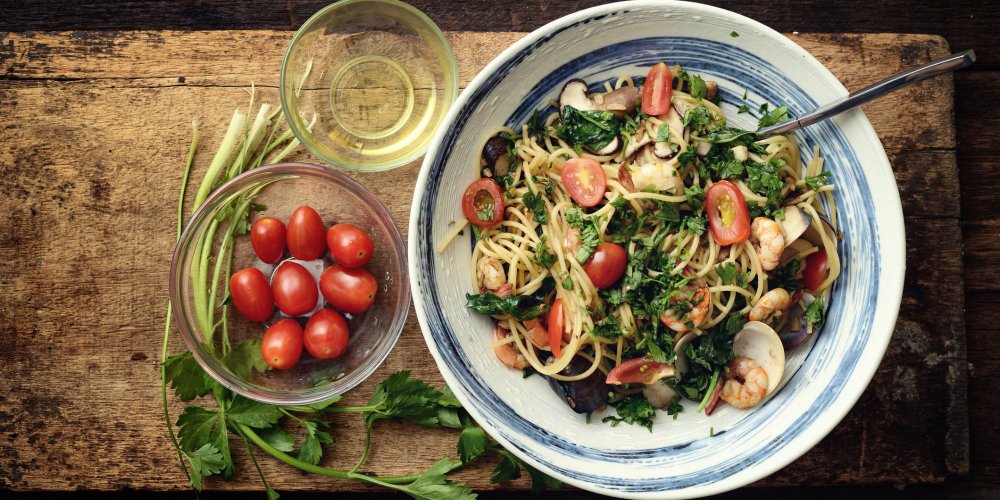We grow because we do not know how to listen to its biorhythms. Translation: just swallowing the right food at the right time to benefit our metabolism rather than our hips.
Depending on the time, the body does not make the same use of our calories . Either he plays the miser and stores, or he squanders them all the way. To melt gently and without depriving ourselves, we put our nutritional clock on time with chrononutrition.
The principle of chrononutrition
Developed by Dr. Alain Delabos in 1986, chrononutrition is not a diet per se, but rather a reorganization of its diet.
No food is forbidden, you just need to know when and how much to consume in the day.
The different stages of chrononutrition
- 5 hours to 9 hours
5 o'clock is the beginning of the shot in our body. In the head, the hormone cortisol, called stress, which also drives the digestive cycle, as well as the neuromediator of catecholamines, responsible for ensuring the awakening and physical-intellectual tone of the morning.
Together, they ensure that each organ or cell has its favorite fuel and essential materials for internal regeneration (fat for cells, amino acids for some neuromediators, sugar for the brain ...).
Where do they find them? Partly in our fat reserves, they massively destock up to 8 hours. A sort of shedding rebellious bulges.
But, "paradoxically, to slim down, you must also eat lipids in the morning (cheese, butter, eggs, cold meats and pastries and prepared cereals).
Upon awakening, the body needs to replenish fatty acids in order to repair and make cell walls. If it is properly supplied, it will not make it.
Double benefit: slimming and lowering of cholesterol, because the saturated fatty substances absorbed in the hour of the rising prevent the body from secreting an enzyme, the HmgCoAréductase, whose mission is to activate the manufacture of fats such as cholesterol ", explains the chrono-nutritionist Alain Delabos.
As a bonus, it slows down the digestion and escapes anarchic secretions of insulin, conducive to the salvage of adipocytes. This is the time to enjoy the pleasure of a buttered toast - vitamins A and D as a bonus - and a piece of cheese.
Rythmo-breakfast : lipids, proteins, carbohydrates with a low glycemic index, cheese or ham or eggs, bread, butter.
- 12 hours to 13 hours
The lipolysis - destocking of the lipids - ends, also the absorption of fats is limited to avoid any unwanted storage and "the animal proteins are favored.The second peak of cortisol, although modest, has triggered a strong secretion of proteases resulting liver, enzymes necessary for digestion.
But the liver essentially manages the assimilation of food of animal origin. Logically, we have lunch of animal proteins, "says Dr. Delabos.
Other boost proteins: degraded in acetone, they have an appetite suppressant: we eat less without losing muscle. In addition, in anticipation of afternoon tea, we begin to refuel tryptophan, an amino acid they contain, which will then be converted into serotonin, the neuromediator of our good mood.
Rythmo-lunch: proteins, vegetables, a little lipid, or meat and vegetables seasoned with olive oil or nuts or rapeseed.
- From 4 pm to 5 pm
It's time for the party for the sweet beaks. We succumb without guilt, it is the rythmonutrition which requires it!
At snack, the body requires quick sugars. Fruits - fresh and dry - and chocolate. And if you have to crack for a praline rock, now is the time!
The explanation? The tryptophan in midday meat needs these fast carbohydrates, at that time of the day, to get into the brain and be converted into serotonin.
A sweet snack offers the assurance of a good morale to protect yourself from the sweet urges, until the end of the day. And if you opt for proteins and vegetable fats, it's because of the pancreas. In fact, this organ deals mainly with vegetables, and its digestive secretions are more important at tea time.
"We expect to be really hungry, the snack is only useful in this condition, warns Dr. Delabos, otherwise you will store instead of slim."
This snack is appetite suppressant thanks to the vegetable fat and avoids rushing on the food by returning home at the end of the day.
The ideal time? An hour and a half to two hours before dinner, but we can also dine late after snack, or even do not dine, but only if we are not hungry. To deprive oneself to lose weight more quickly will have the opposite effect.
Rythmo-tea time : carbohydrates with high glycemic index and vegetable fat. Alternative: a high protein sachet enriched with tryptophan.
- From 8 pm to 9 pm
The body becomes lazy, the digestive secretions are put in stand-by, one metabolizes hardly any more what one swallows because, for the body, the objective is to gather the necessary nutrients to the nocturnal regenerations. All storage warnings turn red.
We give up the lipid dishes (steak-fries, pizza ...) and sweet high glycemic index, possibly a little slow sugars, such as a slice of rye bread or wholemeal bread, to help repair the tissues.
And we put again on the proteins, but light version (fish, poultry), "to optimize their concentration before their nocturnal use, knowing that a simple intake of dairy product helps to cover needs," says nutritionist Laurent Chevallier.
Red meat is avoided because its branched amino acids compete with tryptophan, at the risk of suppressing its benefits.
Rythmo-dinner : proteins and seasoned vegetables.


